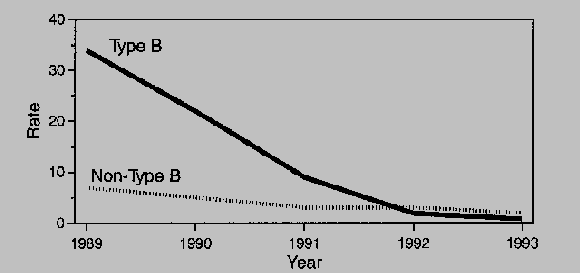Volume 1, Number 1—January 1995
Perspective
Emerging Infections: Getting Ahead of the Curve
Figure

Figure. Race adjusted incidence rate* of Haemophilus influenzae type b and non-type b disease detected through laboratory-based surveillance+ among children aged <5 years--United States, 1989-1993. *Per 100,000 children aged <5 years. +The surveillance area population was 10.4 million in four states (three counties in the San Francisco Bay Area, eight counties in metropolitan Atlanta, four counties in Tennessee, and the state of Oklahoma). Source: CDC. Progress toward elimination of Haemophilus influenzae type b disease among infants and children--United States, MMWR 1994;43:144-8.
Page created: November 16, 2010
Page updated: November 16, 2010
Page reviewed: November 16, 2010
The conclusions, findings, and opinions expressed by authors contributing to this journal do not necessarily reflect the official position of the U.S. Department of Health and Human Services, the Public Health Service, the Centers for Disease Control and Prevention, or the authors' affiliated institutions. Use of trade names is for identification only and does not imply endorsement by any of the groups named above.